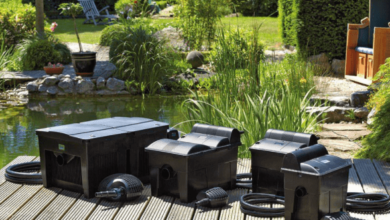Piedras Gravilla para Jardín: A Natural Touch for Outdoor Spaces

Designing a garden that is both visually appealing and low-maintenance is a dream for many homeowners. One increasingly popular solution is using piedras gravilla para jardín, or gravel stones for gardens. These versatile materials add texture, structure, and elegance to any outdoor space. With their natural charm and practical benefits, gravel stones are not just decorative—they’re functional too.
In this article, we’ll explore the uses, benefits, and design tips for incorporating gravel stones into your garden. Whether you’re starting from scratch or upgrading an existing layout, gravel can help you achieve a timeless and serene outdoor environment.
Why Choose Gravel for Gardens?
Its use extends far beyond just being a filler—it can define pathways, highlight plant beds, and even serve as a base layer for larger landscaping projects.
Aesthetic Appeal
The natural color and texture of piedras gravilla para jardín create a visually soothing effect. It complements greenery, flowers, and even wooden or stone structures, bringing balance to the garden.
Versatility
Its compatibility with different design styles makes it a favorite among landscapers.
Drainage Solution
It prevents waterlogging by allowing rainwater to drain through the soil, making it perfect for wet or sloped areas.
Weed Control
When paired with landscaping fabric underneath, gravel helps suppress weeds naturally. It reduces the need for chemical herbicides and makes maintenance much easier.
See also: Transforming Rental Properties: Top Home Improvement Tips for Property Managers
Types of Gravel Stones for Gardens
Not all gravel stones are created equal. Depending on your design goals and budget, you can choose from different types of piedras gravilla para jardin to suit your needs.
Pea Gravel
Their soft appearance makes them ideal for informal garden designs.
Crushed Stone
Crushed stone has jagged edges and compacts better than rounded gravel, making it suitable for driveways and structural use.
River Rock
Larger and smoother than typical gravel, river rock is great for accent features like dry creek beds, fountain borders, or around trees and shrubs.
Decomposed Granite
This fine, sand-like gravel compacts tightly and is often used for patios and trails. It offers a clean, finished look with good drainage properties.
Planning Your Garden Design with Gravel
Using piedras gravilla para jardín requires thoughtful planning to ensure both function and beauty.
Step 1: Define Purpose
Decide where you want to use the gravel. Will it be for a walking path, a plant bed border, a patio area, or a decorative feature?
Step 2: Measure the Area
This ensures accurate purchasing and helps avoid waste.
Step 3: Prepare the Ground
For paths and patios, dig a few inches down to create a base for the gravel.
Step 4: Use Landscape Fabric
Install weed barrier fabric before adding gravel. This step keeps weeds from growing through the stones and helps maintain a clean look.
Step 5: Spread and Level
Pour the gravel evenly across the designated area. Use a rake to spread it to the desired depth (usually 2–3 inches) and ensure a level surface.
Creative Uses of Gravel in Garden Design
Gravel isn’t just for practical purposes—it’s also a design element that can elevate your garden’s style. Here are some creative ways to use piedras gravilla para jardín:
Pathways and Walkways
Create winding paths through your garden using pea gravel or decomposed granite. These walkways not only guide visitors but also add movement and rhythm to your outdoor space.
Zen or Rock Gardens
Use raked patterns in fine gravel to create a meditative space surrounded by stones, moss, or bonsai trees.
Maintenance Tips for Gravel Gardens
Although low-maintenance, gravel gardens still need some attention to stay in great shape. Here are a few tips:
- Top-Up When Needed: Replenish gravel every 1–2 years to maintain depth and appearance.
- Weed Occasionally: While the fabric helps, occasional weeds may appear—pull them manually or use natural weed killers.
- Clean Debris: Remove fallen leaves or plant matter to keep the area tidy and prevent decomposition.
Environmental Benefits
- Reduces Water Runoff: Permeable surfaces help recharge groundwater and reduce stormwater issues.
- Minimizes Chemical Use: Weed barriers and gravel eliminate the need for excessive herbicides.
- Longevity: Unlike bark mulch or grass, gravel does not rot or need replacement often, reducing waste.
Final Thoughts
Incorporating piedras gravilla para jardín into your outdoor design is a smart and elegant way to beautify your space while reducing maintenance and promoting sustainability. Gravel stones bring balance between function and aesthetics, offering solutions for everything from decorative accents to structural support.
Whether you’re refreshing your backyard or designing a new garden from scratch, gravel offers a timeless charm that enhances the overall landscape. Affordable, customizable, and environmentally friendly, it’s the perfect material to give your garden a unique personality and natural appeal.
Start small with a path or border—or go bold with an entire gravel patio. No matter how you choose to use it, gravel will help turn your garden into a relaxing, beautiful haven.





